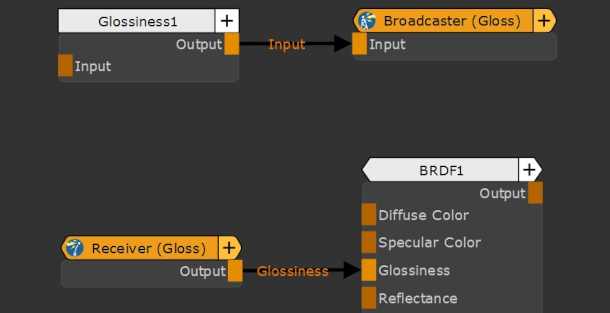Foundry ships Mari 5.0v4
Posted on 18 November 2021 on the release of Mari 5.0. Scroll down for news of Mari 5.0v4.
Foundry has released Mari 5.0, the next major version of its 3D texture painting software.
Key changes include support for Python 3.7, a new USD-based workflow for exporting preview looks to Katana, support for multiple colours in paint strokes, and the option to paint full-colour decals onto a surface.
A separate beta release, Mari 4.8, provides the same new features, but is built on Python 2.7.
A move to Python 3 as part of support for VFX Reference Platform CY2020
The biggest structural change in Mari 5.0 is its move from Python 2.7 to Python 3.7 as part of wider support for the VFX Reference Platform‘s CY2020 specification.
The change brings Mari back in line with other major DCC applications, most of which have already switched to version 3.x of the programming language, Python 2 having reached its end of life in 2020.
For studios that have not yet moved their pipelines to Python 3, Foundry has a separate build of the software, Mari 4.8, which provides the same new features as Mari 5.0, but which remains on Python 2.7.
New USD-based workflow for exporting preview looks to Katana
Of those new features, the headline change is initial support for USD-based workflows.
Although Foundry took over development of an open-source USD importer from Pixar last year, the new releases are the first to ship with a built version of the plugin.
With it, users can import assets in USD format into Mari, although currently only meshes: the importer doesn’t yet support the USD lighting or camera schemas.
Foundry has also introduced a new Mari shader type that approximates the look of UsdPreviewSurface, the standard preview material specified by the Universal Scene Description framework.
Artists can then export flattened representation of material looks using the USD Preview Surface Shader to other DCC applications with Hydra-based viewports, like Katana, its own lighting and look dev software.
The new features are described as the first phase of a more fully featured USD export workflow, intended to “reduce pipeline friction” between Mari and Katana.
Long-awaited updates to the brush system
The release also updates Mari’s brush engine, previously little altered since Mari 1.0.
New features include support for multiple colours for the ‘splats’ that make up brush strokes composited to the paint buffer, making it possible for colour to vary along a stroke.
Users can jitter the hue, saturation and value of the splat colours individually.
Other changes include the option to use a full colour image as a brush tip, instead of just using the image’s alpha channel to define the shape of the brush, making it possible to paint decal images onto an asset.
Users can also use any individual RGB colour channel or the Luminance channel to define the brush tip.
New gradient procedurals for use as masks
Mari 5.0 also introduces five new gradient procedurals, which generate colour gradients that can be used as masks for paint or material effects.
Gradients can be generated according to the distance or facing angle of a point on a model’s surface to a camera or another object, or based on the distance between two objects.
Apply filters non-destructively to Bake Points
Mari’s Bake Points, used to cache the output of sections of the node graph, get support for Filter Stacks.
The change makes it possible to apply filters like Gaussian Blur non-destructively, rather than having to convert the entire material graph to a Paint node and apply the filters there.
Users can toggle individual filters on or off from the Bake Point Node, helping to debug the results visually.
Workflow and performance improvements
Workflow improvements include a Nuke-style Snap to Grid system, making it possible to snap the positions of nodes in the graph automatically to a background grid, helping to keep complex graphs organised.
Performance improvements include “up to 50%” faster shader flattening when applying a Bake Point or Paint Node, and a more efficient mechanism for cleaning out old cache data to reduce project file sizes.

Updated 12 August 2022: Foundry has released Mari 5.0v4.
Although the 5.0 series updates are mainly bugfixes, v4 adds a new teleport node system, which transmits data from a Teleport Broadcast node on one part of the node graph to a Teleport Receiver node on another.
As well as visually decluttering the graph by hiding node connections, the system makes it possible to transmit data from the broadcast node to multiple receivers, even from within nested groups and materials.
Mari 4.8 also continues to be updated, with the teleport node system added to Mari 4.8v4.
New subscription pricing
In addition, Foundry has changed its pricing structure for Mari, with the Mari Subscription plan, which costs $68/month or $689/year for a single licence of Mari, now renamed ‘Mari Individual’.
Foundry has also now introduced a new $1,199/year subscription plan for teams, listed simply as ‘Mari’.
Perpetual licences, which previously cost $2,393, are no longer shown when clicking the ‘Buy’ button on Foundry’s website. We’ve contacted Foundry to confirm whether they are still available.
Updated 16 August 2022: Foundry told us that new perpetual licences of Mari are no longer available, but that it will continue to offer maintenance contracts for existing perpetual licences for the “foreseeable future”.
Pricing and availability
Mari 4.8v4 and Mari 5.0v4 are available for Windows 7+ and CentOS/RHEL 7+ Linux. Foundry announced in 2021 that it is discontinuing Mac support in Mari.
Mari Individual subscriptions cost $68/month or $689/year. Mari subscriptions for teams cost $1,199/year.
Read an overview of the new features in the Mari 5.0 series on the product website
Read a full list of new features in the Mari 5.0 series in the online release notes
